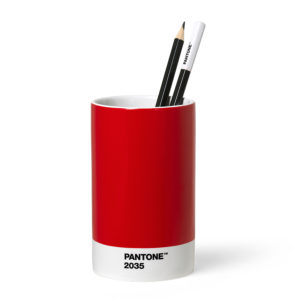

Others include the Munsell system, adopted by the US Department of Agriculture, and the RAL and HKS colour systems, both of which are German. The Pantone® Matching System isn’t the first and only attempt to standardise the language of colour, but it’s the best known by far. To date, Pantone has defined 1,867 proprietary colours for print graphics (with 294 colours added in 2019) and 2.310 colours for fashion, home furnishings and interior decoration. “ So when you pick the right colour, you get the right colour in the end. “We’re a technical product and we help designers and the people producing that product link their communication,” says Ron Potesky, Pantone’s senior vice president and general manager in an article in The Atlantic entitled “ How Pantone Became a Global Authority on Color”. (You can find an extensive collection of colour palettes for famous brands on the site Brand Palettes). If they were specifically talking about the red found in the Google brand, that would be Pantone 7619 C. A standard that allows graphic designers, architects and decorators to speak the same language, meaning that when they are talking about red, they know that everyone else is talking about the same red. Over the years, Pantone colours have become the standard in printing. In 1962, Herbert bought company and, the following year, in 1963, create the first Pantone Guide with 10 colours, specifying the exact formula of the ink for each colour. Lawrence Herbert, a chemist who worked for the firm, realised how difficult it was for designers, advertising agencies and printers to understand one another when they were talking about colour.

The universal language of Pantone colourĪt the start of the 1960s, Pantone was a printing company in New Jersey that specialised in colour cards for the cosmetics, fashion and medical industries. Without reaching the extreme of that famous photo of the blue and black dress - which many see as white and gold -, we’ve all bought something thinking it was one colour, only to discover that other people see it as a different one.Ĭolour perception depends on a range of factors, including the medium (paper, fabric or something else) and the environment (lighting, weather, time of day etc). It was first release in 1963 with the aim of creating a “universal language of colour that enables colour-critical decisions through every stage of the workflow for brands and manufacturers.” The Pantone Color System is a collection of colours identified by a code.

Looking at Boogert’s book today, it’s hard not to immediately think of a Pantone colour guide. A guide in which we find the first attempt to organise and name colours.

Boogert, wrote a book on the use of colour in painting. Before Portuguese traders started importing oranges from India in the 15th century, the colour orange existed, but there was not word for it. Indeed, some colours have gone for centuries without a name. So, the number of colours that we’re able to see is about 7.5 million, but not all of these colours have a name. Each shade - as we saw in another article in this blog - can take on different characteristics depending on brightness and saturation.
#Pantone pencil cup how to#
Pantone colours: what they are and how to use themĪ person with normal vision can distinguish between 150 different shades of colour.


 0 kommentar(er)
0 kommentar(er)
